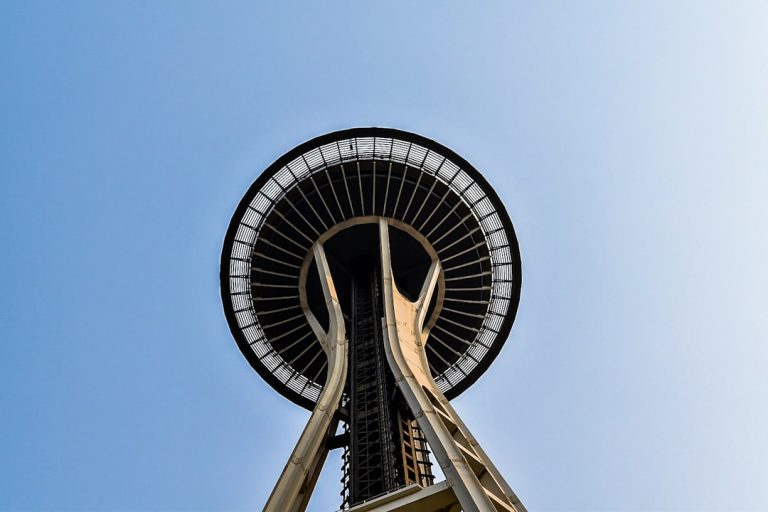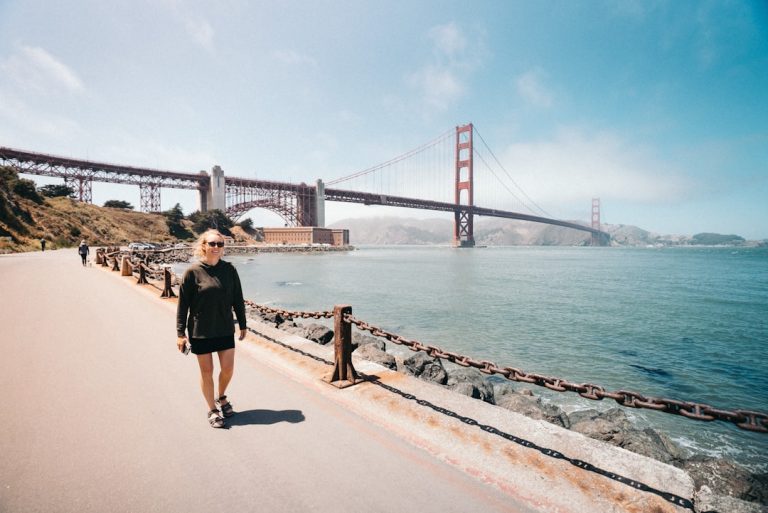
Alaska, often referred to as the Last Frontier, is a land of breathtaking natural beauty that captivates the imagination of adventurers and nature lovers alike. Spanning over 663,000 square miles, it is the largest state in the United States, characterized by its diverse landscapes that range from towering mountain ranges to expansive tundras and pristine coastlines. The state’s geography is a tapestry woven with glaciers, fjords, and vast forests, each contributing to its unique allure.
Denali National Park, home to North America’s highest peak, Mount Denali, showcases the grandeur of the Alaskan wilderness. The park’s rugged terrain is dotted with wildlife and offers visitors a chance to experience the raw power of nature. The natural wonders of Alaska extend beyond its majestic mountains.
The Kenai Peninsula, with its stunning fjords and turquoise waters, is a paradise for those seeking adventure and tranquility. Glaciers such as the Exit Glacier and the massive Hubbard Glacier provide a glimpse into the Earth’s geological history, while the pristine lakes and rivers offer opportunities for fishing, kayaking, and wildlife observation. The vast expanse of the Arctic National Wildlife Refuge is another testament to Alaska’s natural splendor, where visitors can witness the untouched beauty of the tundra and the diverse ecosystems that thrive within it.
Each region of Alaska presents its own unique landscape, inviting exploration and appreciation of the great outdoors.
Key Takeaways
- Alaska offers breathtaking natural wonders, including towering mountains, vast glaciers, and stunning fjords.
- The Last Frontier is home to unique wildlife such as grizzly bears, moose, and bald eagles, providing ample opportunities for wildlife enthusiasts.
- Alaska’s indigenous heritage is rich and diverse, with a strong emphasis on preserving traditional customs, art, and storytelling.
- Visitors to Alaska must not miss iconic landmarks and attractions such as Denali National Park, the Kenai Fjords, and the historic town of Skagway.
- Adventure seekers can partake in a variety of outdoor activities in Alaska, including hiking, kayaking, and wildlife viewing, amidst the state’s stunning natural landscapes.
- Witnessing the spectacular Northern Lights in Alaska is a once-in-a-lifetime experience, with the state being one of the best places in the world to see this natural phenomenon.
Unique Wildlife: Animals of the Last Frontier
Iconic Mammals of Alaska
Grizzly bears roam the forests and mountains, while black bears can be found in coastal areas. The sight of a bear fishing for salmon in a rushing river is a quintessential Alaskan experience. Moose, with their impressive antlers and towering stature, are commonly seen grazing in meadows or wandering through neighborhoods in search of food. The state is also home to caribou herds that migrate across vast distances, showcasing one of nature’s most remarkable spectacles.
The state serves as a critical stopover for migratory birds along the Pacific Flyway, attracting species such as the majestic bald eagle and the colorful puffin.
Marine Life in Alaska’s Coastal Waters
In addition to its terrestrial wildlife, Alaska’s coastal waters teem with marine life. Sea otters float gracefully on the surface, while orcas patrol the waters in search of prey. The annual migration of humpback whales along the coast draws visitors eager to witness these magnificent creatures breaching and feeding. The unique wildlife of Alaska not only enriches the landscape but also plays a vital role in the cultural identity of its indigenous peoples.
Cultural Riches: Alaska’s Indigenous Heritage

Alaska’s indigenous heritage is as rich and diverse as its natural landscapes. Home to numerous Native groups, including the Inuit, Yupik, Aleut, and Tlingit, Alaska boasts a cultural tapestry that reflects thousands of years of history and tradition. These communities have developed unique languages, art forms, and ways of life that are deeply intertwined with the land and its resources.
Traditional practices such as hunting, fishing, and gathering are not merely subsistence activities; they are integral to cultural identity and community cohesion.
Totem poles, which tell stories of lineage and history, stand as monumental testaments to the craftsmanship and spiritual beliefs of Native peoples.
Festivals celebrating indigenous culture, such as the Celebration in Juneau or the Iditarod Trail Sled Dog Race, provide opportunities for cultural exchange and education. These events highlight traditional practices while fostering a sense of pride among indigenous communities. The preservation of language and storytelling remains vital in passing down knowledge and traditions to future generations.
Must-See Places: Iconic Landmarks and Attractions
| Place | Location | Visitor Count |
|---|---|---|
| Eiffel Tower | Paris, France | 7 million annually |
| Taj Mahal | Agra, India | 7-8 million annually |
| Statue of Liberty | New York City, USA | 4.5 million annually |
| Great Wall of China | China | 10 million annually |
Alaska is dotted with iconic landmarks that draw visitors from around the globe. One such landmark is Glacier Bay National Park, a UNESCO World Heritage Site known for its stunning glaciers and rich marine life. Visitors can embark on boat tours to witness calving glaciers and spot seals lounging on ice floes.
The park’s dramatic scenery is complemented by opportunities for kayaking and hiking along its rugged coastline. Another must-see destination is the historic town of Skagway, which played a pivotal role during the Klondike Gold Rush. The town’s well-preserved buildings transport visitors back to the late 19th century when prospectors flocked to Alaska in search of fortune.
The White Pass and Yukon Route Railroad offers breathtaking views as it winds through mountains and valleys, providing a glimpse into the region’s gold rush history. Additionally, Anchorage serves as a gateway to many Alaskan adventures, offering urban amenities alongside access to outdoor activities such as hiking in Flattop Mountain or exploring Kincaid Park.
Adventure Awaits: Outdoor Activities in Alaska
For those seeking adventure, Alaska offers an abundance of outdoor activities that cater to all levels of experience. Hiking enthusiasts can explore trails ranging from easy walks to challenging backcountry routes. The Chilkoot Trail, a historic route used by gold rush miners, provides a glimpse into Alaska’s past while rewarding hikers with stunning vistas of mountains and lakes.
For those looking for a more leisurely experience, the scenic trails around Seward offer breathtaking views of Resurrection Bay. Water sports are also popular in Alaska’s pristine waters. Kayaking in places like Prince William Sound allows adventurers to paddle among icebergs while observing wildlife such as sea lions and otters.
Fishing enthusiasts can cast their lines in some of the world’s most productive waters, targeting salmon or halibut in both freshwater rivers and saltwater bays. For thrill-seekers, white-water rafting on rivers like the Nenana River provides an adrenaline-pumping experience amidst stunning scenery.
Northern Lights: Spectacular Natural Phenomenon in Alaska

Alaska’s Natural Wonders
The Northern Lights: A Celestial Spectacle
The aurora borealis, commonly known as the Northern Lights, is one of Alaska’s most enchanting natural phenomena. This breathtaking display of colorful lights dancing across the night sky draws visitors from around the world who seek to witness this celestial spectacle. The best time to view the Northern Lights in Alaska is during the winter months when long nights provide optimal viewing conditions.
Optimal Viewing Locations and the Science Behind the Lights
Fairbanks is often regarded as one of the best locations for aurora viewing due to its clear skies and minimal light pollution. The science behind this mesmerizing phenomenon lies in solar particles colliding with Earth’s atmosphere, creating vibrant displays of green, pink, purple, and blue lights. While many people travel specifically to see the Northern Lights, they often find themselves captivated by other aspects of Alaskan winter nights—such as starry skies or serene landscapes blanketed in snow.
Capturing the Magic and Exploring Alaska’s Wonders
Various tour operators offer guided excursions that include photography tips and warm accommodations for those eager to capture this magical experience on camera. In conclusion, Alaska stands as a testament to nature’s grandeur and cultural richness. From its awe-inspiring landscapes to its unique wildlife and vibrant indigenous heritage, every corner of this vast state offers something extraordinary for those willing to explore it. Whether you are hiking through national parks or gazing at the Northern Lights illuminating the night sky, Alaska promises an adventure that lingers long after you leave its shores.
If you’re intrigued by the diverse landscapes and cultural heritage of Alaska, you might also find it interesting to explore its neighboring country, Canada. Canada boasts a rich tapestry of history, natural beauty, and vibrant cities that are worth discovering. For more insights into what Canada has to offer, from its majestic mountains to its cosmopolitan cities, check out this related article: Canada: Facts and Places to Visit. This guide will provide you with a comprehensive overview of Canada’s highlights, complementing your interest in Alaska and broadening your understanding of North American travel destinations.
FAQs
What are some interesting facts about Alaska?
– Alaska is the largest state in the United States by area.
– It is home to the highest peak in North America, Denali, which stands at 20,310 feet.
– Alaska has over 3 million lakes, including the largest, Lake Iliamna.
– The state is known for its diverse wildlife, including bears, moose, and bald eagles.
– Alaska has a population of around 731,000 people, making it the least densely populated state in the U.S.
What are some popular places to visit in Alaska?
– Denali National Park and Preserve, home to the highest peak in North America.
– The Kenai Fjords National Park, known for its stunning glaciers and marine wildlife.
– The city of Anchorage, offering a blend of urban amenities and outdoor adventures.
– The Inside Passage, a scenic coastal route popular for cruises and wildlife viewing.
– The town of Juneau, the capital of Alaska and accessible only by boat or plane.
What are some must-see things in Alaska?
– Witnessing the Northern Lights, a natural phenomenon visible in certain parts of Alaska.
– Experiencing the midnight sun, where the sun remains visible for 24 hours during the summer months.
– Visiting a sled dog kennel and experiencing a dog sled ride.
– Exploring the unique native Alaskan culture and art, including totem poles and traditional crafts.
– Taking a scenic flight over the vast and rugged Alaskan landscape.






